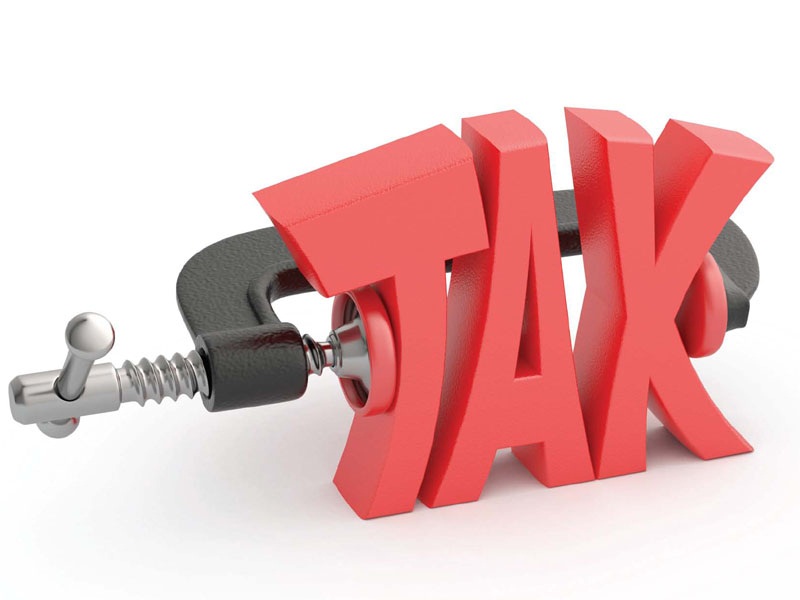Businesses across stages are rethinking how they access executive financial leadership, and 2025 brings clearer benchmarks for what to expect when engaging a part-time CFO. If you’re evaluating options, you’ll want to understand how rates shift by city, company size, and scope—plus how new tools are changing the economics. This guide cuts through the noise with practical ranges, contextual examples, and actionable negotiation tips. You’ll also see how transparent firms structure engagements so you can match service level to outcomes without overpaying. For more in-depth comparisons and checklists, Go to Page to explore related resources and case profiles.
Market Overview: Average Fractional CFO Rates in Major U.S. Cities
Rates vary widely by location, reflecting cost of living, talent density, and sector mix. In New York and San Francisco, seasoned executives commonly bill between $275 and $450 per hour, with niche IPO or complex transaction work occasionally exceeding that range. Los Angeles, Boston, and Seattle typically fall in the $225 to $380 band, especially for growth-stage companies juggling investor reporting and multi-entity consolidations. Cities like Austin, Denver, and Atlanta often see $190 to $320 for similar experience, while Midwestern hubs such as Chicago and Minneapolis may range from $170 to $300 depending on specialization. Remote-first arrangements can narrow these differences, but on-site requirements still command a premium in 2025.
What influences regional spreads
Local demand for transaction support, the presence of high-growth industries, and the availability of senior operators all influence regional pricing dynamics. For example, a surge in venture-backed activity or private equity roll-ups in a city will push rates upward, as capacity tightens among executive consultants. Travel time, real-time collaboration expectations, and board exposure also shape pricing, since they raise the bar for responsiveness and availability. Firms with deep bench strength might blend rates by pairing a strategic lead with a manager-level operator to keep total engagement costs in check. When comparing proposals, look beyond headline numbers and assess whether the scope and staffing model match the complexity of your needs and your target “all-in” spend on Fractional CFO Hourly Rates.
How Company Size and Revenue Affect Executive-Level Fees
The larger and more complex your organization, the more time and specialization a CFO requires to produce reliable, decision-grade reporting. Pre-revenue startups or sub-$5M companies often need capital planning, light treasury, and system setup—work that can fit within $160 to $250 per hour when the scope is well defined. As revenue crosses $10M, especially with multiple SKUs, channels, or entities, rates typically climb to $200 to $325 due to added rigor in forecasting, controls, and board communications. Mid-market firms with audits, lender covenants, and multi-country operations may see $250 to $400, reflecting heightened risk and the need for experienced leadership during closes and strategic transactions. The fee curve tracks not only size but also the cadence of deliverables and the depth of stakeholder scrutiny.
Scope depth and decision rights
Fees correlate strongly with decision rights and accountability. A fractional CFO who merely advises on metrics will price differently than one who owns the forecast, presents to the board, and steers lender or investor negotiations. Adding audit readiness, M&A diligence, or ERP migration oversight raises both hours and seniority mix, which makes a blended approach attractive. You might engage a principal for strategic sessions while delegating reconciliations, reporting packages, and model maintenance to senior analysts. Clarity on outcomes—cash runway stability, margin expansion, or debt compliance—helps you align budget with impact while keeping Fractional CFO Hourly Rates proportional to measurable results.
Comparing Hourly, Retainer, and Project-Based Billing Models
Hourly billing provides flexibility and transparency when needs are sporadic or exploratory, but it can introduce variability and unpredictability in your monthly spend. Retainers, by contrast, set a consistent cadence—say one or two days per week—ideal for companies with ongoing reporting, leadership meetings, and investor updates. Project-based pricing works well for discrete milestones like fundraising readiness, ERP selection, or a 100-day value creation plan; scope clarity is essential to avoid change orders. Many organizations blend these models, using a retainer for core operations and a project fee for heavy lifts such as audit preparations. The best fit depends on volatility of workload, your appetite for predictability, and how quickly you expect deliverables to pay back.
Evaluating trade-offs before you sign
Under hourly structures, ensure time is tracked by workstream so you can see where value accumulates and when to shift tasks to lower-cost resources. Retainers should spell out what is included—close support, cash reporting, board deck development—and what triggers added fees, preventing scope creep. Projects must define acceptance criteria, timeline, and escalation steps for dependencies outside the CFO’s control. It’s especially important to benchmark against prevailing Fractional CFO Hourly Rates so you know how the implied hourly value stacks up inside a retainer or fixed fee. With a clear map of responsibilities and outcomes, you can choose a model that aligns incentives and limits surprises.
Industry-Specific Pricing Insights for Tech, Retail, and Manufacturing
Technology companies often pay a premium for CFOs versed in SaaS metrics, revenue recognition under ASC 606, and complex capitalization tables. For venture-backed startups or scale-ups, typical ranges run $225 to $375 per hour, rising with fundraising, international expansion, or IPO readiness. Retail—especially omnichannel—demands expertise in inventory turns, markdown strategy, and store-level P&L visibility, usually landing between $190 and $320 depending on seasonality and geographic footprint. Manufacturing introduces cost accounting depth, standard costing, and supply chain risk management; here, rates often sit at $210 to $350, skewing higher with multi-plant operations and ERP modernization. The common thread is operational complexity: greater variability and integration needs lead to higher pricing for experienced leadership.
Matching specialization to outcomes
When evaluating fit, probe for sector-specific wins that mirror your goals, such as shortening cash conversion cycles in retail or elevating sales efficiency in SaaS. Ask how the CFO will instrument dashboards and data models that reflect your unit economics and risk profile, not just generic KPIs. In manufacturing, seek examples of yield variance analytics, throughput modeling, and vendor performance reviews that turned insights into cost reductions. If you need a deeper breakdown of sector benchmarks, Go to Page for templates and questions you can use during interviews. Aligning specialization to your roadmap is the most reliable way to control cost while unlocking measurable gains.
The Role of Automation and AI Tools in Shaping CFO Costs
Automation is compressing manual hours, especially in reconciliations, variance analysis, and rolling forecasts. A fractional CFO who deploys AI-driven close tools, OCR invoice processing, and FP&A platforms can often deliver more in fewer hours, even if the headline rate is higher. The economic trade-off is about throughput and accuracy: better systems reduce rework, accelerate reporting cycles, and surface early warnings that protect margins. Many leaders now package platform implementation in the first 60–90 days, then taper to a lighter, insight-focused cadence. When comparing proposals, account for the lifetime value of process upgrades, not just the near-term spend.
Pricing signals from tech-enabled practices
Expect to see two patterns in 2025: premium rates for CFOs who architect integrated data stacks, and blended teams that allocate routine tasks to automation or analysts at lower rates. Both can outperform traditional staffing if outcomes are clearly defined and software costs are managed transparently. Ask whether the firm passes through tool licenses at cost, how they quantify time saved, and what governance ensures data integrity. Benchmarking these factors against current Fractional CFO Hourly Rates helps you estimate your effective cost per deliverable, not just per hour. Over a year, the right automation strategy can reset your baseline finance cost while elevating decision quality.
Negotiating Transparent Agreements with Financial Consultants
Transparency starts with scope granularity: define workstreams, decision rights, timelines, and owners so accountability is unmistakable. Your agreement should specify deliverable formats, meeting cadence, turnaround times, and what constitutes “urgent” work. Insist on visibility into who is doing the work—partner, director, manager—and the rate for each, with a plan for substitution if capacity changes. Expense policies, license pass-throughs, and any third-party subcontracting should be spelled out to avoid unexpected markups. Clarity at this level protects budgets and keeps incentives aligned across strategic and operational tasks.
Practical steps for clarity and control
Request sample weekly reports that show hours by workstream and progress against milestones so you can spot scope drift early. Build a change-control clause that requires your written approval before adding projects, with explicit pricing for new work. If you’re evaluating multiple firms, compare their assumptions and success metrics side by side; firms like Lineal CPA emphasize straightforward engagement letters, quantifiable outcomes, and clean, auditable billing. Where you need a deeper checklist and sample language, Go to Page for downloadable frameworks you can adapt. With a shared definition of success and evidence-based pricing, negotiations focus on value creation rather than ambiguous effort estimates.
Predicting How 2025 Economic Shifts Will Influence CFO Rates
Macroeconomic conditions in 2025 point to cautious growth, with financing costs still meaningful and lenders attentive to covenants. When capital tightens, demand rises for CFOs who can optimize cash conversion, model scenarios, and navigate refinancing—forces that tend to lift rates for seasoned operators. If inflation cools and supply chains stabilize, operational complexity eases for some sectors, tempering price pressure except in specialized transaction work. Labor markets remain competitive for analytics-savvy leaders, particularly those fluent in AI-enabled FP&A and cross-border tax structures. Overall, expect rate stability with premiums where risk, regulation, or transformation are in play.
Signals to watch as you budget
Keep an eye on deal flow in your sector, audit firm backlogs, and the IPO or exits pipeline—all bellwethers for advisory capacity and pricing. Track adoption of forecasting automation, because as tools get better, the market will value vision, change management, and stakeholder credibility over raw hour counts. Be explicit about whether you need steady-state operations or catalytic change; the latter typically commands higher rates but shorter timelines to value. Build budget scenarios that test both utilization and rate sensitivity so you can adapt quickly if conditions shift. For ongoing updates and model templates you can tailor to your plans, Go to Page and bookmark the resources that map most closely to your growth trajectory.
















